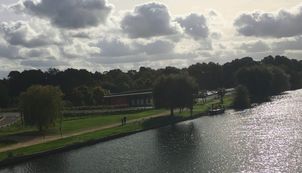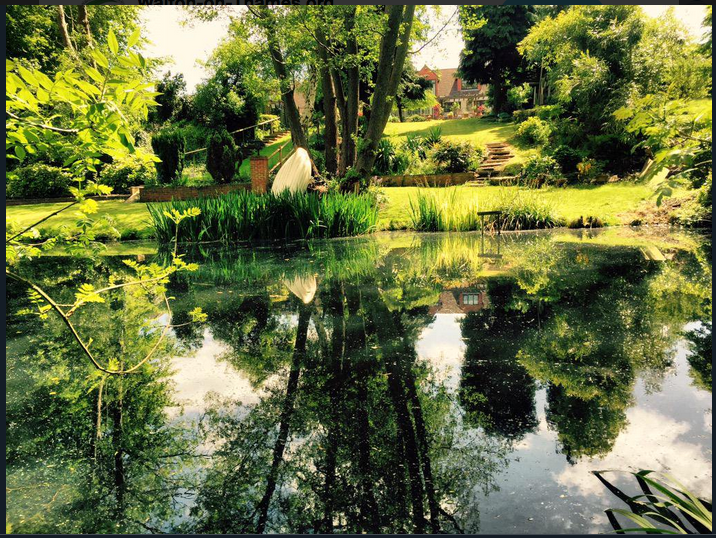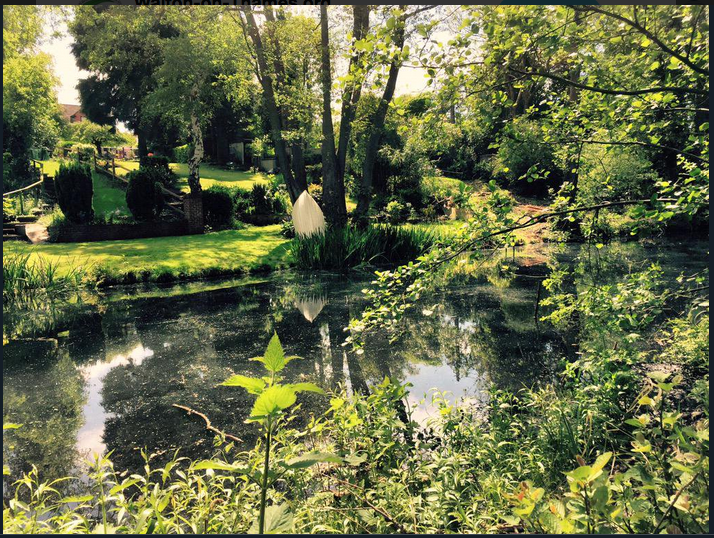Cowey Sale

The name of this area of riverside land adjacent to Walton Bridge derives from Cow Way. In the 17th Century the land was used for grazing and was approached by a wooden bridge over a small stream known as the Seale or Sale. The name possibly derived from the sallows (willows) which grew beside it.
|
COWEY SALE RUMOURED SITE OF CAESAR'S CROSSING OF THE THAMES
William Camden(1) identified Cowey Stakes or Sale, Walton as the place where Julius Caesar forded the River Thames on his second invasion of Britain, which stakes the Venerable Bede (2) spoke of remaining in his time. A fisherman removed several stakes about thigh-width and 6 feet (1.8 m) made of wood that was very black and hard enough to turn an axe, and shod with iron. He sold these to John Montagu, 5th Earl of Sandwich, who used to come to the neighbouring Shepperton bank to fish, for half a guinea a piece. (1) William Camden (2 May 1551 – 9 November 1623) was an English antiquarian, historian, topographer, and herald, best known as author of Britannia, the first chorographical survey of the islands of Great Britain and Ireland, and the Annales, the first detailed historical account of the reign of Elizabeth I of England. (2)The Venderable Bede (1672- )was an English monk at the monastery of St. Peter and its companion monastery of St. Paul in the Kingdom of Northumbria of the Angles (contemporarily Monkwearmouth–Jarrow Abbey in Tyne and Wear, England). He is well known as an author and scholar, and his most famous work, Ecclesiastical History of the English People gained him the title "The Father of English History". |
Photo credit to Andy Blackwell. Check his Flickr account for more amazing images.
|



